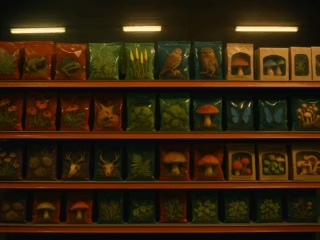We recently sat down with the folks from Ad Pulse to have a chat about artificial intelligence, its intersection with sustainability marketing, and whether or not it’s a sensible partner within that overlap.
Here’s a link to the interview, as published – and we’re publishing the full unabridged chat below…
Do marketers or agencies factor in the carbon emissions of AI systems when measuring the sustainability of their campaigns? How does a brand like Coca-Cola navigate sustainability reporting in this context?
To be blunt, it’s just not being done. There might be a few brands that are starting to try but I think most brands – from startups to multinationals – are just turning a blind eye for now. That might sound like just my opinion but recent studies back this up, such as early 2025 research from Capgemini revealing that only 12% of executives using AI are measuring its emissions. And even then, you could hardly say that 100% of those are doing so accurately – they’re just vaguely trying because it’d be an oversight not to.
How do marketing agencies like WPP, Publicis, or Ogilvy—especially those investing in efficient AI modules—approach the issue of curbing carbon footprints?
Well, most of those agencies are enthusiastically working with fossil fuel clients (see the F-list from Clean Creatives) so sustainability and climate are not a priority for those groups – on a fundamental level. In fact, it’s probably more of a threat to their model than an opportunity. I imagine there might be some superficial efforts on cycling schemes, tree planting, carbon offsets, organic avocados in the office etc. – the classics. Anything they say on that side should be taken with a pinch of salt.
I read Akepa’s blog and found their emphasis on transparency particularly compelling. Can you expand on what transparency means in the context of marketing and AI usage? Are we talking about transparency between brands and agencies, or does it also include consumers?
This is still something we’re working on and thinking about so it’s fair to say that our thoughts on this aren’t fully formed. However, for now we’d say that the transparency we’re referring to is about reporting back on the emissions from AI alongside other sources that are typically reported on as part of Scopes 1-3. Still, this is an emerging area and not easy to do.
On those other points, we are transparent with clients whenever we use Gen AI to create content for them (and we’d recommend that approach to other agencies) but it’s also key to use AI mindfully and not get carried away on the wave of excitement. Like that, you’re being wasteful and not saving all that much time either.
On the consumer side, we’ve seen quite a few backlashes recently when brands have used AI in an excessive or unnecessary way. It’s even more sensitive for brands in sectors relating to sustainability. The WWF Denmark recently used Gen AI to create a very clever campaign about the hidden costs to biodiversity, which is a standout example of how Gen AI can be used to create something sensational (that would be incredibly difficult to bring to life so well without AI, from the creative concept). But despite how impressive and widely-shared the campaign was, there was still quite the backlash against it because of AI’s involvement – even though there was complete transparency.
As a sustainable marketing company, do you think brands tend to invest less in advertising their sustainable practices? If yes, then why?
There’s not as much investment as was expected a few years ago. However, one thing that sometimes causes confusion is that being a sustainable marketing company (and also a sustainable brand) is not about advertising sustainable practices all the time. Doing so can get people switching off rather than on. Rather, as we’d define it, it’s more about your choice of projects and clients and helping those to succeed. To do that, you need to advertise a lot more than sustainability. We relatively rarely bang on about our own sustainable practices or those of the brands we work with. Instead we’re often talking about their core business – although of course through the lens of sustainability.
I might be overthinking the question though and a simple answer is that investment in sustainability advertising overall has probably declined a bit. For various reasons like the cost of living crisis, fears of greenwashing, changes in the geopolitical momentum, people just getting frustrated by the whole thing, etc.. Hopefully it’ll come back.
What role does AI play in helping brands predict trends, personalize content, and reduce waste in campaigns—and is that enough to consider the process ‘sustainable’?
There is definitely the scope for AI to be used for good (or you could say sustainability). Therein lies a common misconception though because Gen AI and AI are related but they’re not the same thing. AI – or you could say Narrow AI – has been around for longer than Gen AI in the public domain and there are plenty of startups using AI in promising ways. Take the Rainforest Alliance who are using affordable sonic detectors and cloud-based AI to rapidly detect illegal logging and monitor biodiversity in forests – we featured them and 7 other brands in a recent roundup of firms using AI for good.
Gen AI is trickier. When we talk about the specific type of AI that creates marketing content like articles, videos, images, etc. seemingly from scratch, in what ways can that be used sustainably? When you think about issues like job losses, emissions, copyright, brain drain, and other ethical dilemmas it’s harder to see how the process can be considered sustainable. You could perhaps make some arguments about Gen AI making content creation more efficient / less wasteful – especially as AI begins to move beyond articles and enter the fancier realms of design, video and film – but those arguments are a bit flimsy at the moment and not backed by much research. Pretty much the same can be said of other forms of AI that can be used for marketing, like Agentic AI.
Nevertheless, AI is an irreversible change to the way we work so using it in a more ‘sustainable’ manner is a challenge that we’re going to have to confront. And at Akepa this is a dilemma we’re starting to help clients tackle with a new service around AI for sustainability.
Is there a sustainable way to scale AI usage in marketing, or will the environmental costs eventually outweigh the benefits as adoption grows?
This remains to be seen and for now you could be a bit pessimistic and say probably not. I think the pessimistic argument has the better of it at the moment but if you were to be optimistic you’d hope that the emissions from AI and its data centres would come down as new technologies step in to make those data centres and other infrastructure more efficient. Quantum computing, for one, or fusion power, or other stuff that has still to be invented. To me, those sound a bit too speculative but you never know. Things change. With such mass AI adoption, and AI even being integrated into everyday Googling, we have to hope for something quick.
Thanks again to AdPulse for their time – and if you fancy having a chat with Akepa about anything at all, literally, just get in touch.



Leave a Reply